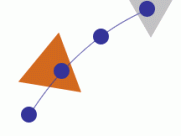Introduction
Electrical stimulation use dates back to ancient time when electric eels were used to treat painful spines and limbs. In this lesson, we will study characteristics of electricity, electricity effects in biological tissue, and its use in rehabilitation. By understanding how electrical stimulation effects muscle and nerve function, we can safely and effectively select the most appropriate "estim" to maximize patient progress toward goals in the plan of care.
Lesson Objectives
After completing this lesson, the successful student will be able to:
- Describe the key terms, principles, and theory of electrical stimulation.
- Describe the physiologic effects of electrical stimulation.
- Describe the three major forms of current used in electrical stimulation Describe common electrical stimulation devices and their clinical indications.
- Describe expected goals and outcomes for application of electrical stimulation.
- Recognize precautions and contraindications to electrical stimulation.
- Define electrical stimulation parameters (i.e., frequency, duty cycle, ramp time, waveform, pulse rate, pulse duration, and treatment duration).
- Describe the properties and configuration of electrodes used in electrical stimulation Identify the role of the PTA during application of electrical stimulation.
toc | return to top | previous page | next page


